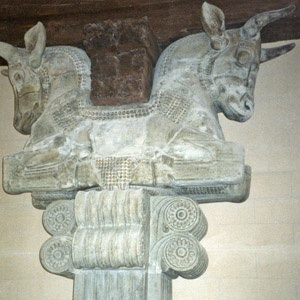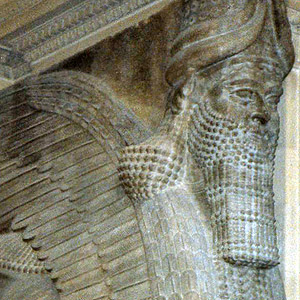| The Louvre Palace and Museum | ||
|
|
The Louvre museum in Paris was a military fort when it was originally built. French King Philippe II Auguste, or Philip the II of France (1165-1223, ruled after 1180) gave an order to build a wall around Paris and create a defensive castle on the Louvre’s present site in 1190 AD. Therefore in the early stage of Louvre was used as an arsenal and prison. In thirteenth and fourteenth centuries, the French royal family had their Paris residence on the Ile de la Cite in the Seine River (where the French Hall of Justice now stands) until Charles Ⅴ (1338-1380, ruled after 1364) had the fort transformed into a royal residence. Around 1369, shortly after his accession to the throne, Charles V moved into the Louvre as the Paris royal palace. So, from 1369 until 1422, and then again from 1527-1793 the Louvre was the Paris home of the French kings. Of course, each French King had different opinions about where he preferred to live and which palace would be his primary home. Over the years the monarchs extended and decorated the Louvre palace. King Francis I (1494-1547, ruled after 1515) was fond of art and collected many Italian paintings and sculptures, which he wanted to display in the Louvre. He put Pierre Lescot, the master of early French renaissance in charge of reconstructing the palace. Jean Goujon and Paul Ponce were in charge of arranging the sculptures. The Louvre palace was famous to the world for its design and decoration by different masters of architecture, and it was the primary residence of French kings, but in 1682 King Louis XIV relocated his court to Versailles Palace, abandoning the Louvre as a primary residence, although it remained the royal palace for Paris. During the French revolution (specifically, in 1791) the revolutionaries forced the royal family to move back to Paris to remain in the Louvre palace, and also decided to make the Louvre Palace a place to store all the scientific and artistic treasures. Two years later, in 1793 the Louvre became the Central Art Museum. Since then the Louvre has become a world famous museum because its rich art collections. In 1981 the remaining official government offices (The Finance Ministry) were moved out of the Louvre and the palace became entirely devoted to its function as a museum. There is a huge glass pyramid located in the courtyard of the Louvre palace. This structure was controversial, and the subject of debate in French society. During renovations in the 1980s the French government hired a Chinese-American architect, Ieoh Ming Pei (贝聿铭) to design a building for the Bicentennial of the French Revolution. The style of this glass pyramid contrasts with the architecture of Louvre. Just as the proposal for the Eiffel Tower caused people to panic about an incompatible object marring artistic Paris, so too there were complaints about Pei’s design. Anyway, this glass pyramid has become the main entrance to the exhibition sites, and its multifunctional design more completely serves the increasing numbers of tourists visiting the museum. The pyramid reminds visitors of ancient Egypt, and brings the visitors on a journey from the ancient Egyptian civilization to a multicultural art tour. There are many masterpieces of art in the Louvre museum’s collections such as Mona Lisa, Venus of Milo, Victoire de Samothrace and many other ancient works. The museum focuses especially on the period from classical Roman, Greek, and Egyptian eras to the Renaissance.
|
| ||
Links about The Louvre:
|
| Back to the World History Timeline in English | ||
| Back to the Historylines home page.td> | ||
| Articles of French history:Eiffel tower, Paris Opera house, Versailles, Notre-Dame de Paris |
Photo Gallery of Louvre. Photographs by Virginia Ives, Paul Orsay, and Victor Ives. |
 |
 |
 |
|
| This is the top (capital) of a column from the audience hall in the palace used by Darius (ruled Persia from 521-486 BC). | A winged human-headed bull (shedu or lamassu) from Dur Sharrukin, made during the reign of Sargon II (721-705 BC). The Neo-Assyrian period. | The Roman Emperor Hadrian (76-138 AD). |

This work by Eric & Chun-Chih Hadley-Ives is licensed under a Creative Commons Attribution-NonCommercial-ShareAlike 4.0 International License.